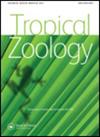与巴拿马运河第三水闸扩建项目有关的野生动物救援和重新安置工作
IF 0.4
4区 生物学
Q4 ZOOLOGY
引用次数: 3
摘要
自1999年美国将巴拿马运河割让给巴拿马共和国以来,巴拿马的人类发展速度加快,导致栖息地丧失,野生动物数量减少。我们实施了一项与巴拿马运河第三船闸扩建项目相关的野生动物救援和搬迁计划,并在这里描述了我们的努力和发现。2007-2010年间,从运河沿线的11个地点救出了896只动物;84%的个体(n = 806)被成功迁移到保护区,6%(n = 57)被重新安置圈养。在超过16000个物种中,103个物种获救 h人类的努力;在这些物种中,有66种被列为世界自然保护联盟红色名录中最不受关注或更高级别的物种。我们估计了救援地点的野生动物生物多样性价值;Berger–Parker、Simpson、Shannon和Brillouin指数的平均值分别为0.2、0.9、2.5和2.1,表明物种组成具有高度多样性。我们的研究为大型野生动物救援行动的过程和阶段提供了难得的见解,并对巴拿马运河流域发现的野生动物多样性进行了检查。本文章由计算机程序翻译,如有差异,请以英文原文为准。
Wildlife rescue and relocation efforts associated with the Panamá Canal Third Locks Expansion Project
Since the ceding of the Panamá Canal from the United States to the Republic of Panamá in 1999, human development has accelerated in Panamá, resulting in the loss of habitat and declines in wildlife populations. We implemented a wildlife rescue and relocation program associated with the third locks expansion project of the Panamá Canal and here describe our efforts and findings. During 2007–2010, 896 animals were rescued from 11 sites along the canal; 84% of these individuals (n = 806) were successfully relocated to protected areas and 6% (n = 57) were relocated to captivity. One-hundred three species were rescued during >16,000 h of human effort; of those species, 66 were listed as Least Concern or higher on the IUCN Red List. We estimated wildlife biodiversity values from rescue sites; mean values were 0.2, 0.9, 2.5, and 2.1 for Berger–Parker, Simpson, Shannon, and Brillouin indices, respectively, indicating high diversity in species composition. Our research provides rare insight into the process and phases of a large wildlife rescue operation as well as an examination of wildlife diversity found in the Panamá Canal Watershed.
求助全文
通过发布文献求助,成功后即可免费获取论文全文。
去求助
来源期刊

Tropical Zoology
生物-动物学
CiteScore
2.50
自引率
0.00%
发文量
1
审稿时长
>12 weeks
期刊介绍:
Tropical Zoology is an international zoological journal publishing original papers in the field of systematics, biogeography, phylogeny, ecology and conservation of all terrestrial and aquatic animal Phyla from tropical and subtropical areas.
Only papers with new information, high quality and broad interest are considered. Single species description and checklists are not normally accepted. Review papers are welcome. The journal is owned by the Istituto di Ricerca sugli Ecosistemi Terrestri of the Consiglio Nazionale delle Ricerche, Florence, Italy (CNR-IRET) who performs research into the structure and functioning of aquatic and terrestrial ecosystems, focusing in particular on anthropogenic pressure and global change. The knowledge amassed forms the scientific basis for identifying the most appropriate protective and corrective interventions, and provides support for the bodies entrusted with formulating policies for environmental protection and recovery.
 求助内容:
求助内容: 应助结果提醒方式:
应助结果提醒方式:


